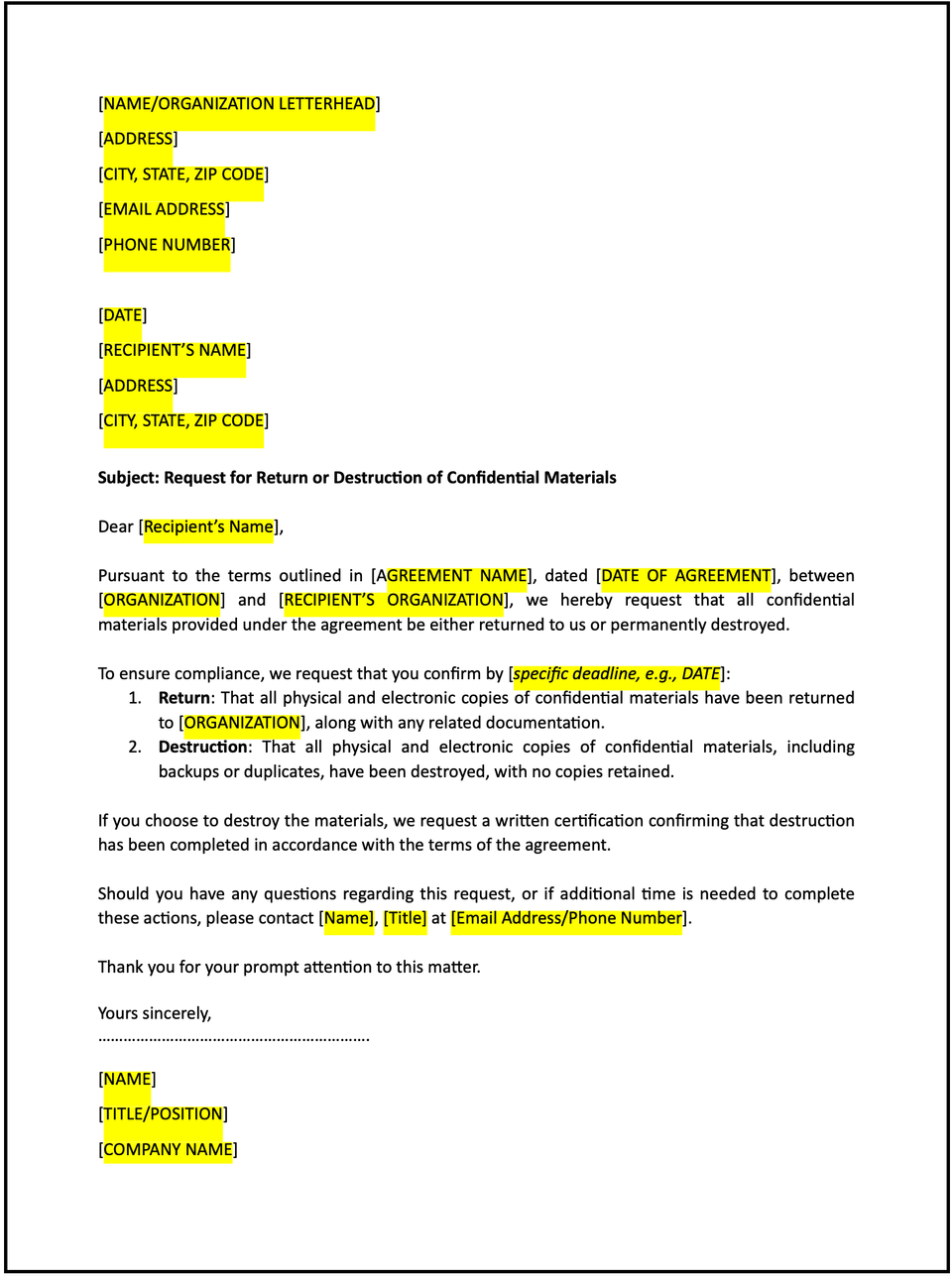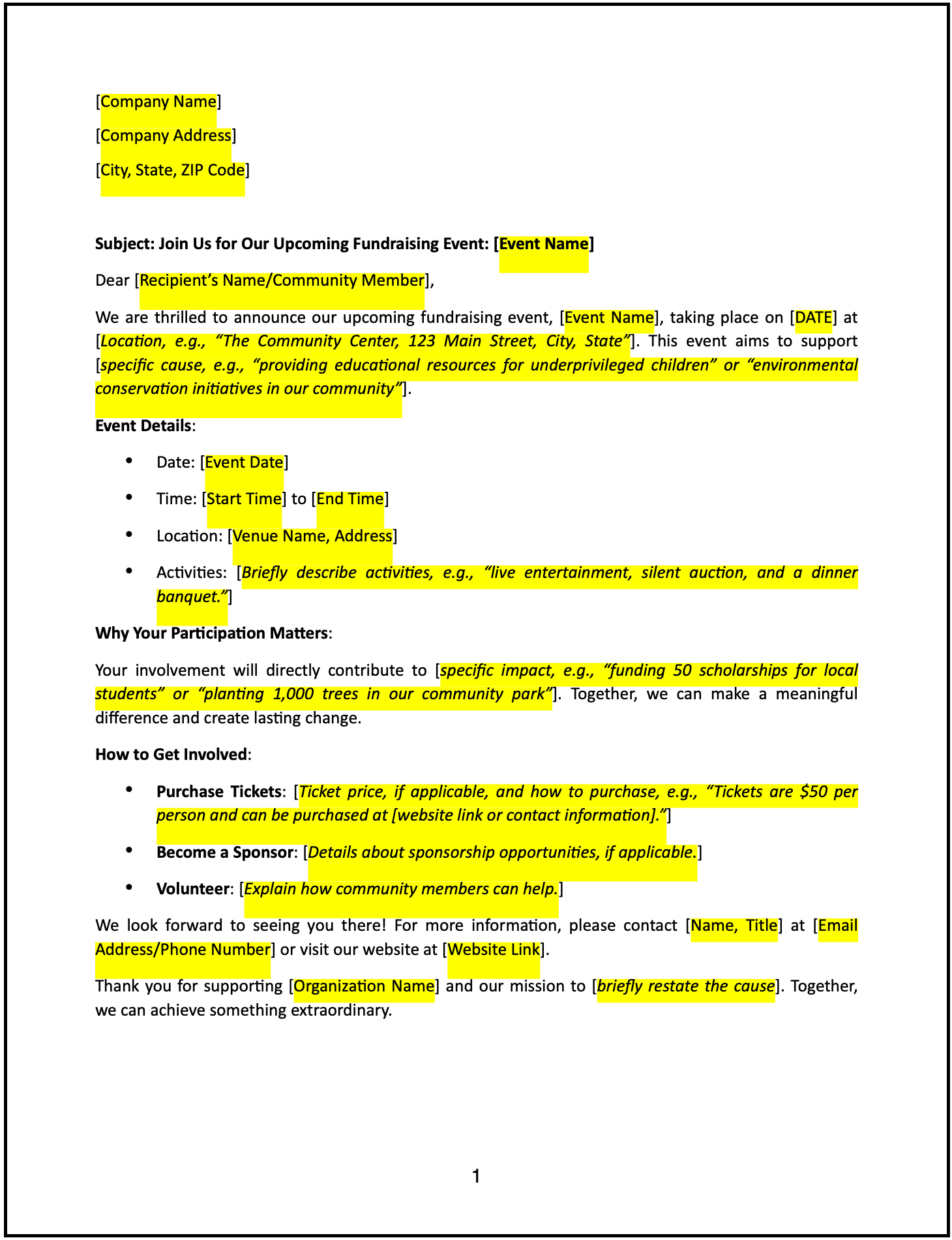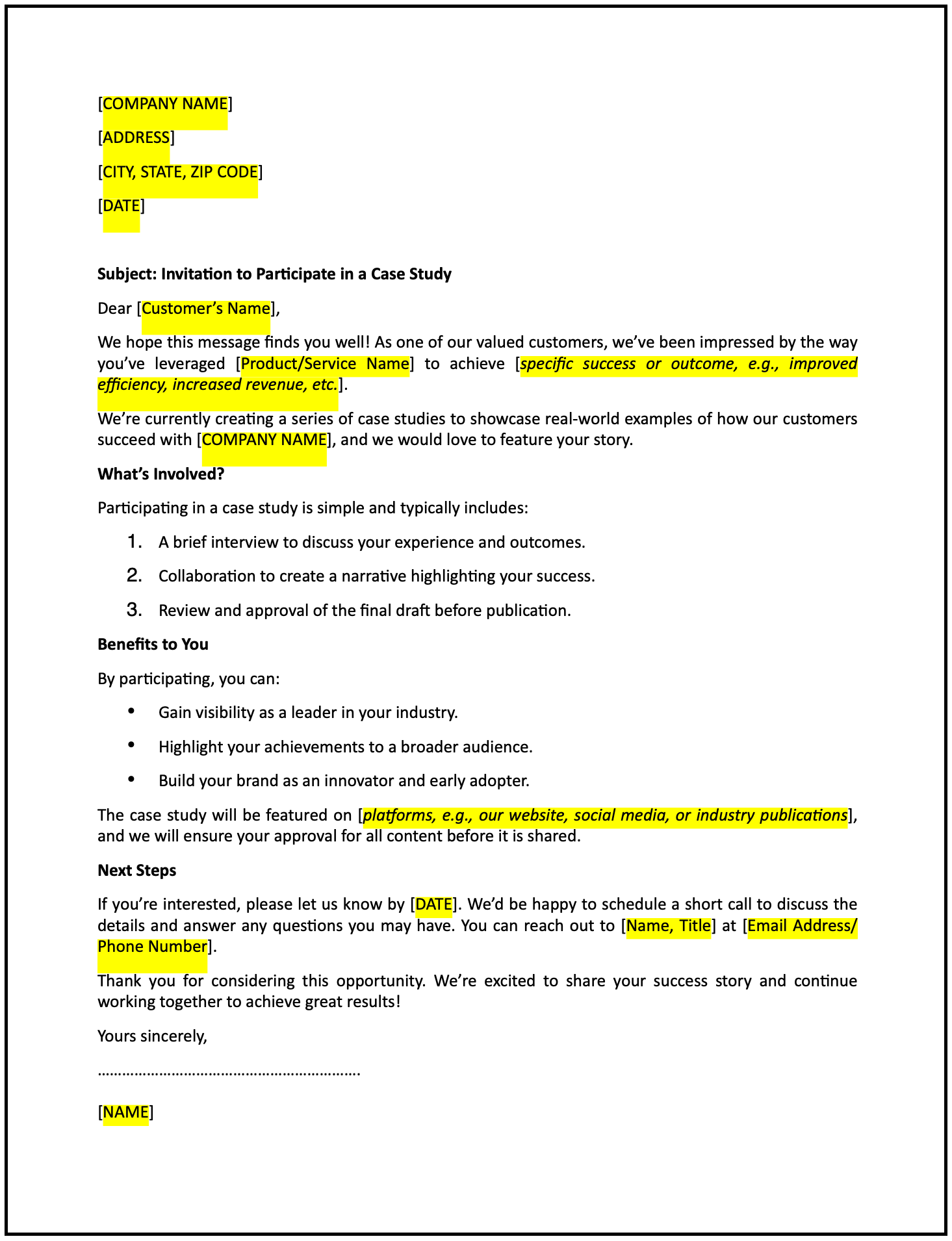Request for return or destruction of confidential information letter: Free template

Request for return or destruction of confidential information letter
A request for return or destruction of confidential information letter is a formal communication used to ensure the proper handling of sensitive materials after the completion of a business relationship, project, or contractual obligation. This letter is typically sent under the terms of a confidentiality agreement (NDA) or data protection policy, requesting that the recipient either return or securely destroy all confidential materials in their possession.
The letter outlines the basis for the request, the specific information to be handled, instructions for compliance, and a timeline to ensure proper execution. It also reinforces professionalism, risk mitigation, and regulatory compliance by formally documenting the request.
How to use this request for return or destruction of confidential information letter
- Open with an introduction: Address the recipient professionally and reference the confidentiality agreement or any contractual arrangement that governs the handling of the confidential materials.
- State the purpose: Clearly explain that you are requesting the return or destruction of confidential information in accordance with the agreement’s terms.
- Specify the information: Identify the materials subject to return or destruction, including the format (e.g., physical documents, digital files, email communications, stored records).
- Reference the agreement: Cite the specific clauses in the confidentiality agreement, NDA, or contract that establish the recipient’s obligation to return or destroy the information.
- Provide instructions: Clearly outline the steps for returning the materials (e.g., via courier, encrypted digital transfer) or for securely destroying them, such as shredding, permanent deletion, or certified disposal.
- Request confirmation of compliance: If applicable, ask the recipient to provide written confirmation of destruction or a certificate of destruction as proof of compliance.
- Specify a deadline: Establish a reasonable timeframe for the completion of the request, ensuring timely action.
- Reaffirm commitment: Emphasize your organization's commitment to confidentiality and professional business practices.
- Maintain a professional tone: Keep the letter clear, concise, and respectful while reinforcing the importance of compliance.
- Provide contact information: Include your name, title, organization, phone number, and email address so the recipient can respond with confirmation or clarification.
Benefits of using a request for return or destruction of confidential information letter
- Promotes accountability: Clearly outlines the recipient’s responsibilities for returning or securely disposing of confidential materials.
- Reflects professionalism: Demonstrates a structured and respectful approach to handling post-engagement confidentiality requirements.
- Encourages compliance: Reinforces the importance of fulfilling contractual and legal obligations.
- Builds trust: Transparent communication supports a strong and professional business relationship.
- Supports risk mitigation: Ensures secure handling of sensitive materials and reduces the risk of data breaches or misuse.
Tips for writing an effective request for return or destruction of confidential information letter
- Be specific: Clearly describe the confidential information to be returned or destroyed, including its format and any identifying details.
- Use professional language: Maintain a respectful and constructive tone to encourage cooperation.
- Provide context: Briefly explain the basis for the request and reference the relevant confidentiality agreement.
- Highlight mutual benefits: Emphasize how fulfilling the request protects both parties and reduces risk.
- Include actionable steps: Share instructions for completing the actions, such as delivery methods or secure destruction protocols.
- Keep it concise: Focus on essential points while maintaining a professional and well-structured tone.
Frequently asked questions (FAQs)
Q: What details should I include in this letter?
A: Include references to the confidentiality agreement, the information in question, instructions for return or destruction, and a proposed timeline.
Q: Should I personalize the letter?
A: Yes. Addressing the recipient by name and referencing specific agreements or materials adds clarity and professionalism.
Q: Who typically sends this letter?
A: Legal teams, compliance officers, risk managers, or business owners responsible for managing confidential information.
Q: How formal should this letter be?
A: The tone should be professional, respectful, and focused on ensuring cooperation and compliance.
Q: When should this letter be sent?
A: It should be sent after the conclusion of a business relationship, upon contract termination, or when confidential information is no longer needed.
Q: Can this letter include a request for a certificate of destruction?
A: Yes. Requesting a certificate of destruction provides formal documentation that materials have been properly disposed of.
Q: Is acknowledgment from the recipient required?
A: Yes. Requesting written acknowledgment helps confirm that the recipient has reviewed and is acting on the request.
This article contains general legal information and does not contain legal advice. Cobrief is not a law firm or a substitute for an attorney or law firm. The law is complex and changes often. For legal advice, please ask a lawyer.


